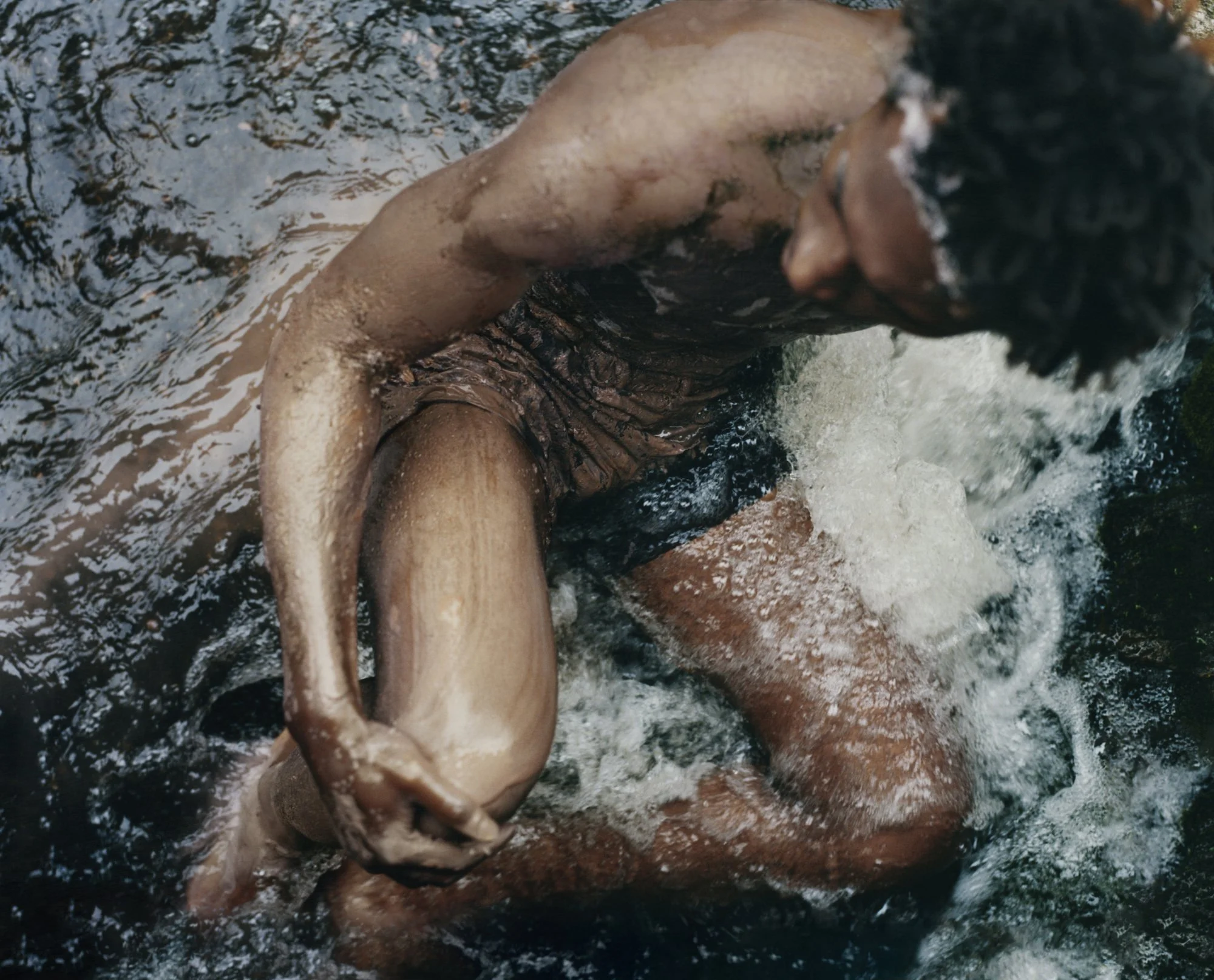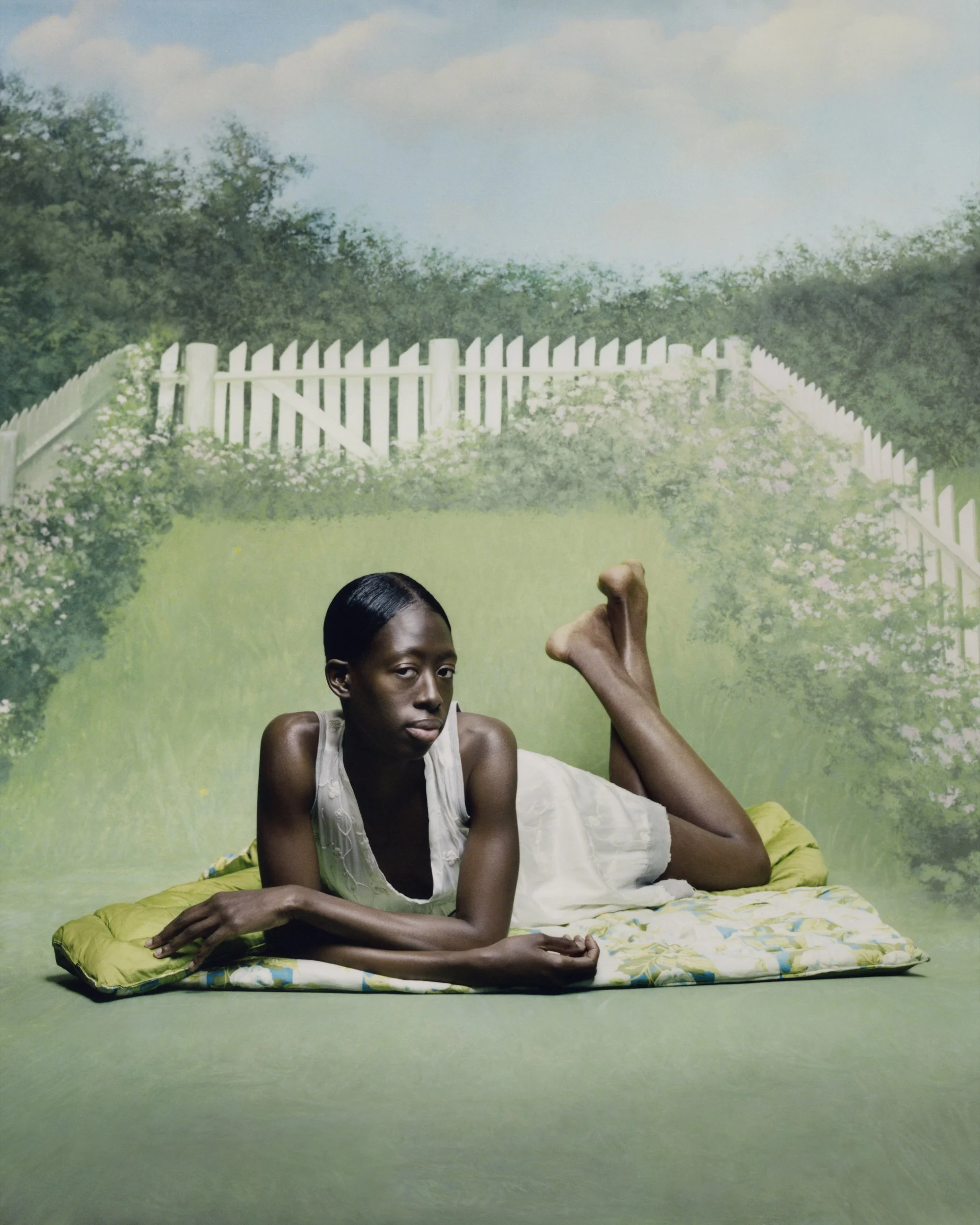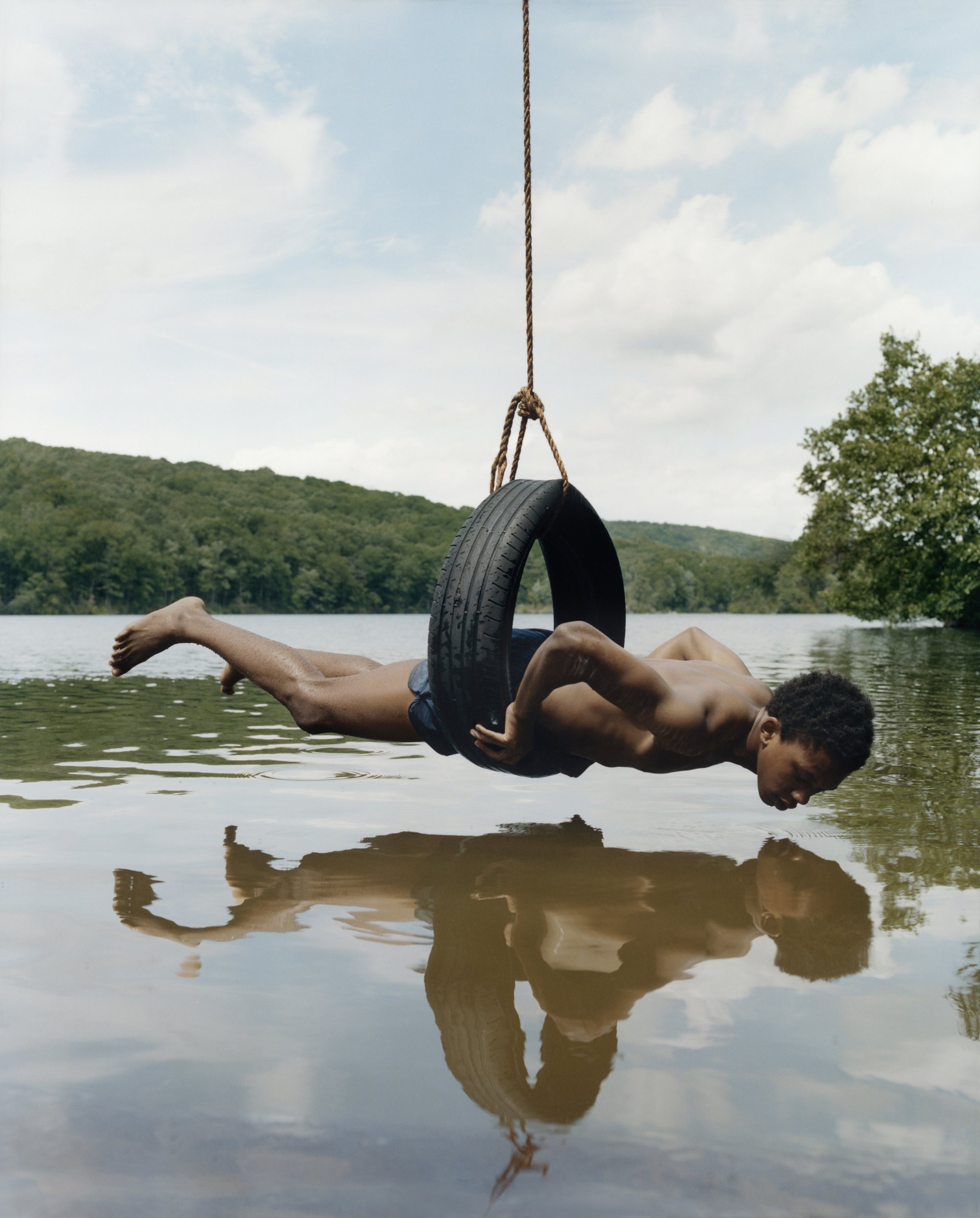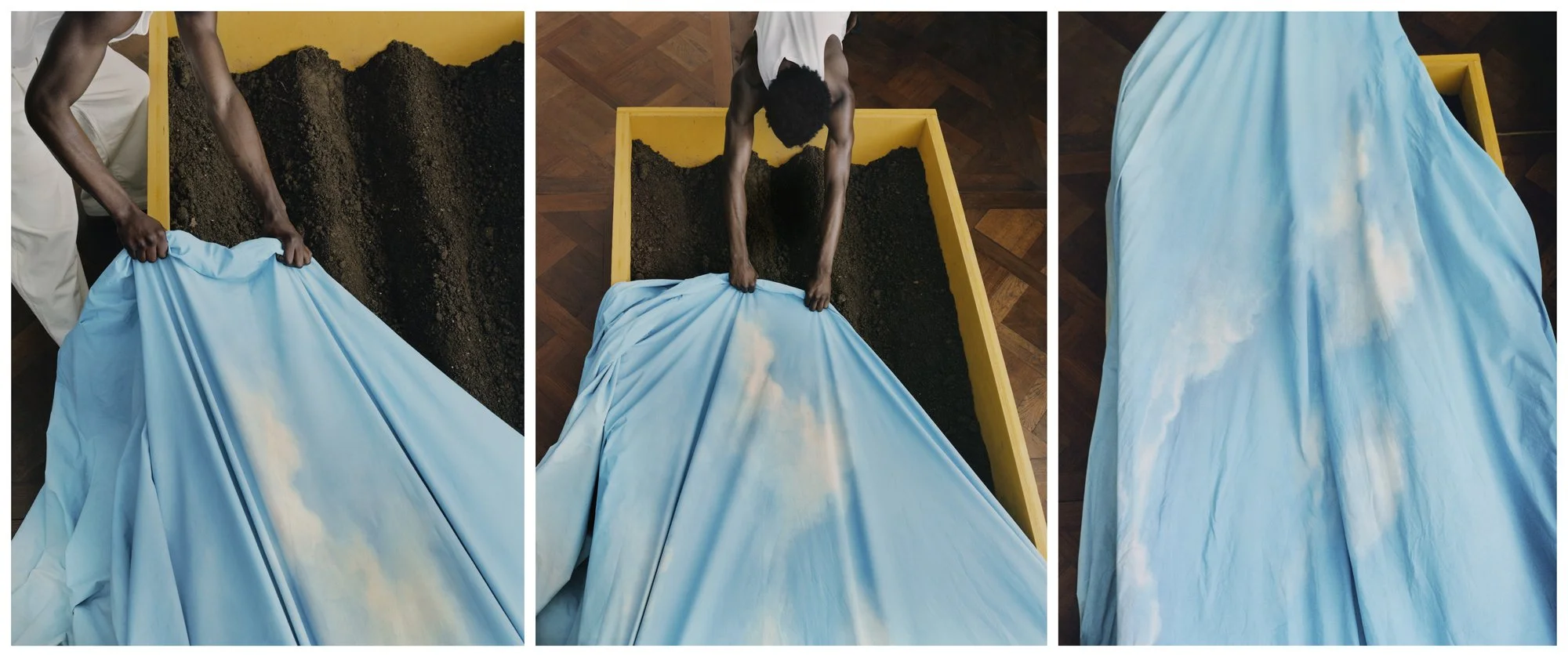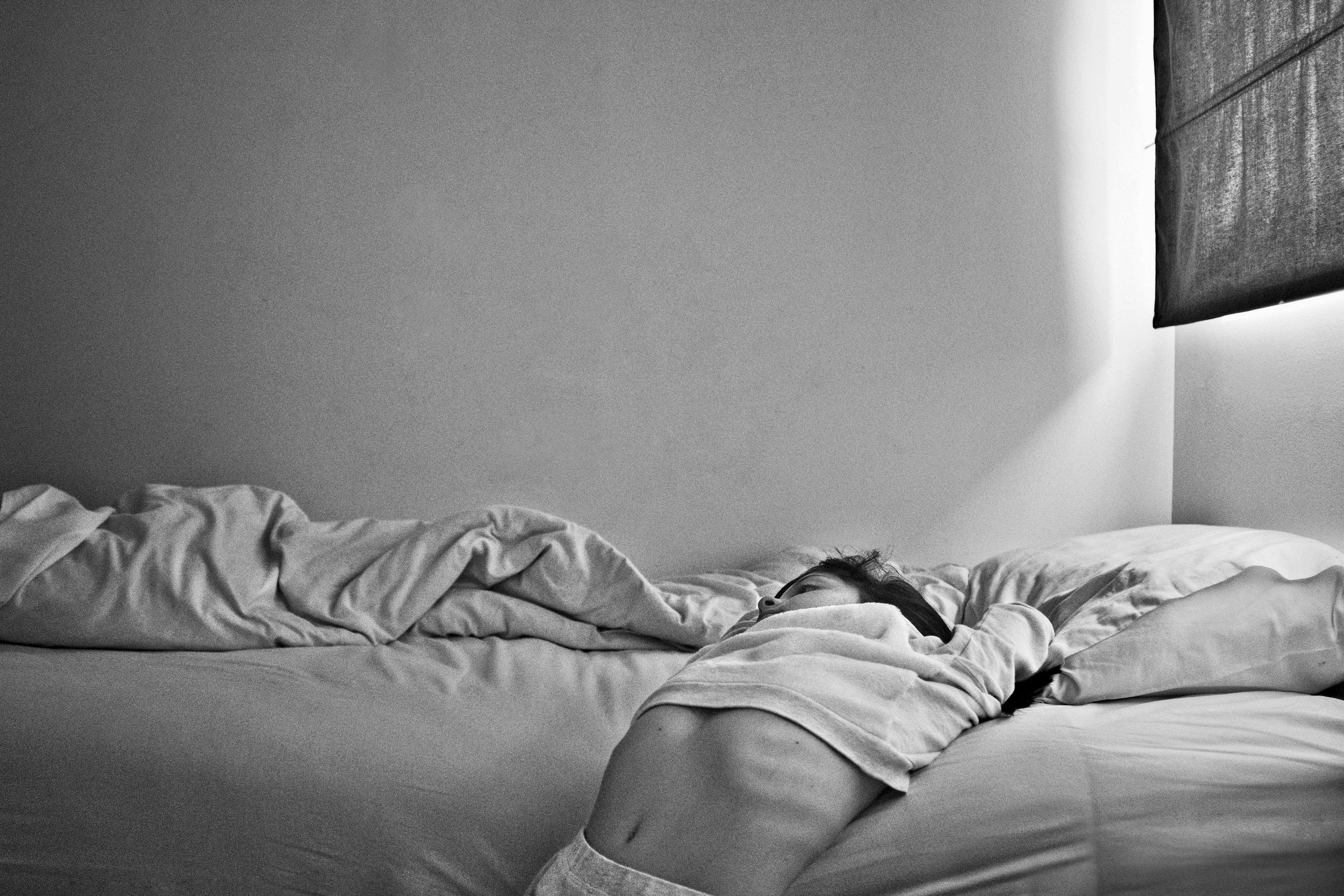Tyler Mitchell: Retreating into Transcendence
Tyler Mitchell © Tyler Mitchell, Courtesy of the artist, Jack Shainman Gallery, and Gagosian
BY ARI ADAMS
Tyler Mitchell made history in September 2018: The photographer was hand picked by Anna Wintour to shoot the cover of Vogue’s all important September issue and, in doing so, Mitchell became the first black photographer to have their work featured on the American magazine’s cover in its then 125-year history. With the publication of the September issue that year, Mitchell had left his footprint among not only the long lineage of Black photographers that came before him, but the history of the medium itself. Since 2018, Mitchell’s work has been featured in exhibitions around the world, making his footprint on the medium even more influential and cementing his place as one of the foremost working fashion and fine art photographers. His project, I Can Make You Feel Good, was exhibited at FOAM Amsterdam in 2019, before traveling to New York’s International Center of Photography in January, 2020. Furthermore, the exhibition was translated into a book of the same title which was first published by Prestel in August, 2020 and is currently in its second edition. In October, 2022, Mitchell’s most recent exhibition—which is aptly named Chrysalis—was on view at Gagosian’s Davies Street, London location and suggests that the boundary defying artist is in a state of transition.
Tyler Mitchell, Distillation, 2022. Courtesy of Gagosian
Focusing his lens on creating a Black utopia, Mitchell’s photography has, up until Chrysalis, been defined not only by a joyful subject matter, but also by his employment of bold, saturated colors and his extensive application of vibrant fabrics and garments upon his models.
Reminiscent of the oeuvre of Roy DeCarava, Mitchell’s subject matter depicts Black joy and life as somewhat mundane. Yet, in its mundanity and simplicity, Black joy becomes energetically alive and dynamically complex.
“Imagine a world—a tableau of visual landscapes—filled with play, leisure, delight, and wonder. We are invited into simple scenes of the everyday mundane in which people are shown as just being: standing there, leaning here, smiling, touching one another, or gazing upward at the sun. To consistently compose and frame this utopic vision lies at the core of artist Tyler Mitchell’s conceptual ethos,” writes Isolde Brielmaier, who curated Mitchell’s show at the International Center of Photography and currently presides as Deputy Director of the New Museum in New York City.
While Mitchell’s Chrysalis exhibition builds upon his utopian worldview, the elocutionary choices that the artist applies to his new imagery imply a conceptual metamorphosis in the photographer’s oeuvre. “I started to realize that sitting at the metaphorical edges of those pictures was this idea of what was socially denied,” says Mitchell of his book, I Can Make You Feel Good, which is an undeniably joyous celebration of Black life and interconnectedness. In Chrysalis, however, Mitchell explores these edges and the ability for Black bodies to exist freely, or not freely, in America. “These works lean into that tone more. I think they still are about this idea of repose and a sort of meditative state, but chrysalis in and of itself being this idea of cocooning away from the world … transforming and evolving is what the show is really about,” says Mitchell while in conversation with art curator and historian Zoé Whitley.
Tyler Mitchell, Cage, 2022. Courtesy of Gagosian
Tyler Mitchell, A Glint of Possibility, 2022. Courtesy of Gagosian
This transformation is best represented in Chrysalis’ self-titled image, which features a model laying upon a steel-frame bed that is cocooned with mosquito-netting. Reminiscent of an earlier photograph Mitchell captured of Donald Glover for Interview Magazine, which is brightly and evenly lit and emanates saturated yellows and oranges, the Chrysalis image utilizes intense and contrasting shadows to emphasize the contours of the model’s body. The deep greens and browns throughout the image are consistent throughout Mitchell’s newest body of work. Despite the similarity of this image to an earlier work, the messages of the individual images could not differ more. While Glover stares directly into Mitchell’s camera in the earlier work, denoting the power and confidence that is expected of a Hollywood star, the later image feels comparatively quiet and contemplative, indicating a meditative vulnerability seen throughout the show. In the Glover image, Mitchell uses a mosquito net around a bed to connect his and Glover’s upbringings in Georgia, a famously hot and humid place where mosquitoes thrive. Conversely, Chrysalis uses the mosquito net in a manner which reminds the viewer of the bed curtains that were common among British and American aristocrats up through the Gilded Age, suggesting a nobility to his subject who quietly rests. “I really enjoy the idea of making photographs that reference other photographs you've made and this cycle,” says Mitchell.
The colors used by Mitchell in Chrysalis are muted compared to his earlier, highly saturated works. This change, which is one of the artist’s most obvious transformations, is not merely stylistic, but deeply rooted in the conceptual nature of the project. “Everything's very intentional,” Mitchell says, “from the burgundies to the greens to the browns.” In many ways, Chrysalis finds tonal inspiration from the Georgia clay and the murky Southern lakes that Mitchell frequented as a youth in the Atlanta area. In doing so, it grounds his work to that of earthly experiences as opposed to his previous, otherworldly and eden-like images. Despite this grounding effect, the images speak to the idea of attempts to ascend to the type of eden that Mitchell portrayed in his earlier works.
Tyler Mitchell, Protection from the Elements, 2022. Courtesy of Gagosian
This ascendent vision which is expressed through Mitchell’s use of color is portrayed in his images Flotation and The Aviator. Inspired by Haitian Voodoo rituals, Mitchell captures the body of his model swimming through thick, muddy water in Flotation, cementing the color palette of Chrysalis. The body of the subject is seemingly overcome by the murky water as it reflects and emphasizes the musculature of Mitchell’s model, who is ambiguously struggling to stay afloat or is ascending in natural pleasure. “Specifically water and mud,” Mitchell says, “called to my mind a lot of connotations as it relates to the Black experience having to do with spirituality.” Furthermore, in The Aviator, an image awash with dark green undertones, Mitchell captures a young man staring straight into the lens. Inspired by Toni Morrison’s Song of Solomon, Mitchell says that while he was reading, he was “thinking a lot about this idea of flight, metaphorical flight, and kind of the aviator and all these ideas, not that he's flying at all. But this idea that there's sort of a psychological thing going on, maybe underneath.”
The concepts of flight, ascendence, retreat and transformation are overwhelming in Tyler Mitchell’s Chrysalis exhibition. Created in a post-COVID, post-George Floyd and post-Trump world that has seemingly ceased to try to improve and has conversely accepted the chaos that proliferates in humanity’s day-to-day lives, Mitchell’s images in Chrysalis provide a counterpoint. Through Mitchell’s visual meditations on the connection of the human body to natural environments and the transcendentalism of spirituality, he finds a path through the chaos of the real world and into the eden that he has already created.
FIN
Tyler Mitchell, Chrysalis, installation view, 2022. Courtesy of Gagosian




